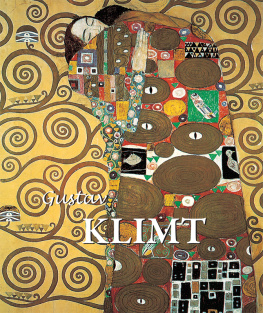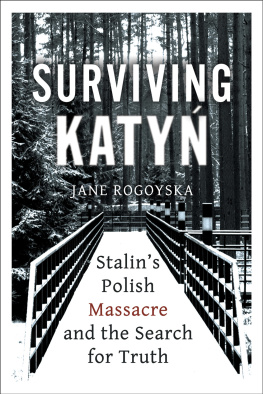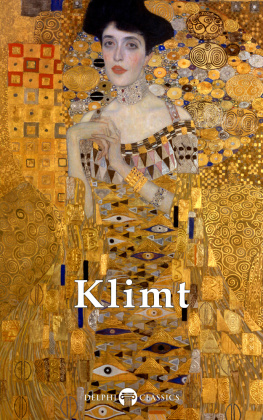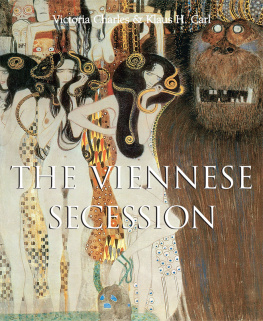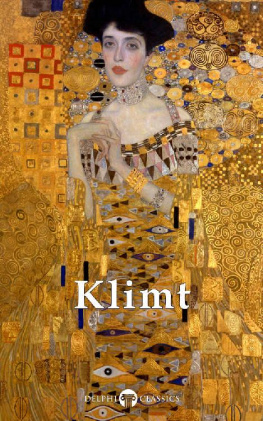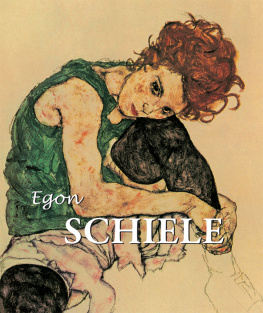Author: Jane Rogoyska and Patrick Bade
Layout:
Baseline Co. Ltd
61A-63A Vo Van Tan Street
4 th Floor
District 3, Ho Chi Minh City
Vietnam
Library of Congress Cataloging-in-Publication Data
Rogoyska, Jane.
Gustav Klimt / Jane Rogoyska and Patrick Bade. -- 2nd ed.
p. cm.
Includes index.
1. Klimt, Gustav, 1862-1918. 2. Artists--Austria--Biography. I. Klimt, Gustav, 1862-1918. II. Bade, Patrick. III. Title.
N6811.5.K55R64 2011b
709.2--dc23
[B]
2011024520
Confidential Concepts, worldwide, USA
Parkstone Press International, New York, USA
All rights reserved.
No part of this publication may be reproduced or adapted without the permission of the copyright holder, throughout the world. Unless otherwise specified copyrights on the works reproduced lie with the respective photographers, artists, heirs or estates. Despite intensive research, it has not always been possible to establish copyright ownership. Where this is the case, we would appreciate notification.
ISBN: 978-1-78310-183-2
Jane Rogoyska and Patrick Bade
Gustav Klimt


Contents

Gnawing Sorrow
(detail from second panel of
The Beethoven Frieze), 1902.
Casin on plaster, height: 220 cm . Secession, Vienna.
The Viennese Secession
Eight Years of Secession (March 1897 June 1905)
Criticism Polemic Pamphlet Chronicle
by Ludwig Hevesi, Vienna 1906
The city council has, in recent days, in a moment of epiphany, made the decision to grant the Vereinigung bildender Knstler sterreichs (Association of Visual Artists in Austria) a piece of property for the construction of an art exhibition center on the corner of the Wollzeile in Vienna. The conditions, however, for this grant still need mitigation. This is what the Viennese would call a Wiener Lokalnachricht (a local headline) but compared to all the other headlines that have been published in the papers over the last years, this announcement is of tremendous importance. A magic word has been spoken which shall break the chains and raise the dead from their graves: an urban expansion is on the horizon that shall rejuvenate Viennas art scene. As a city of the arts, Vienna, this formidable little town shall finally become Great Vienna, truly a New Vienna. The citizens of Vienna themselves are going to be surprised by the news since all the conspirators behind this project have been untiringly working in deepest silence in their metaphorical mountain retreat. The time of planning is finally over; today action speaks louder than words, for this courageous venture is already secured, both artistically and financially, at least for the next decade.
It was a group of young artists with strong and fresh blood running through their veins whose determination set this movement in motion; it is the most consistent movement in Vienna ever since the fiery temperament and genius of Hans Makart set the world of art on fire. This movement holds great promise; it might follow in the footsteps of all the other great art movements: The Vereinigung der XI in Berlin who exhibit their art in Schultes art gallery or it might even be a Secession just as in Munich, Paris and other art capitals all over the world. It could be an exodus to the Holy Mountain; one part movement of opposition, one part new creation, an Anti-Salon which will by nature always be a salon for the rejected.
At the same time, however, these bold, young Austrians are considerate patriots. They want to be neither frondeurs and even less do they want to wage a guerilla war against the Academy and the Knstlerhaus. It is not the urge to rebel against their elders that is driving them forward. They are not out to offend anyone or to celebrate themselves. No, their goal is to elevate the traditional, classical Austrian art to a modern, international level. The artists themselves put their intention into the following words:
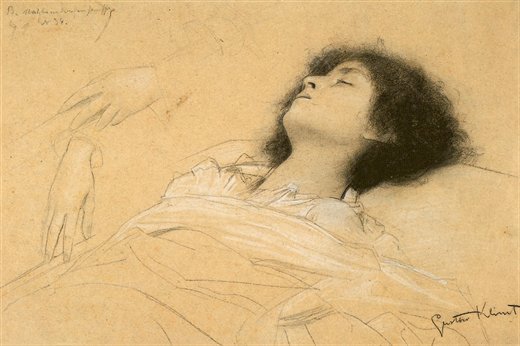
The Death of Juliet, 1886.
Black pencil with white highlights,
27.6 x 42.4 cm.
Graphische Sammlung Albertina, Vienna.
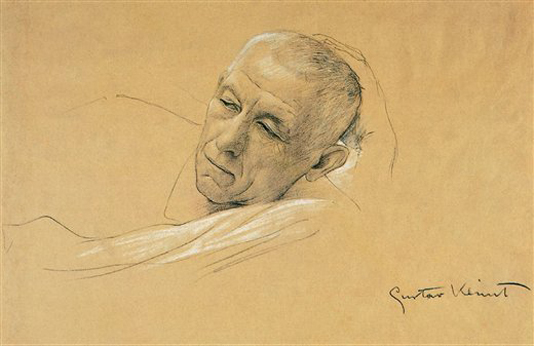
Mans Head Lying Down
(painting from the ceiling of the
Imperial Venetian Theatre), 1886-1888.
Black chalk, white highlights, 28 x 43 cm.
Graphische Sammlung Albertina, Vienna.
A band of young artists has, driven by an ideal and an unshakeable faith in Viennas artistic future, undeterred by any obstacle - founded an association of visual artists for Austria. With the help of several true friends of the arts and supporters who are willing to make sacrifices and disregard material hardship, they want to follow their calling and be artistically active.
Despite their non-confrontational intentions, the V.b.K. is still a warlike association because they wanted to fight the lack of ideas and the artistic phlegm in todays art scene. This goal is not to be reached by arguing polemically but by aiming for purely artistic ideals and educating the eye, the art perception of the masses so that they can better understand the living, ever-evolving nature of art. This better alternative will thus become an enemy of everything that was only good so far and, naturally, even more hostile towards the bad.
This task requires immense endurance, for the public has to be broken of its tolerance for bad art. The bad has simply to be made impossible by silencing the demand for it. The necessity for a new renaissance in the arts is evidenced by the presence of quite a few famous names - which are beyond any suspicion of being youthful upstarts - that are joining the ranks of the movement. Grandmaster Rudolf Alt was asked to act as honorary president. Which accusation could there be that is not disproved by his presence? Quite a few academic professors are joining the ranks of the artists: Myslbek, Hellmer, Julian Falat, Hynais. Among our young members are Engelhart and Moll, whose determination is the stuff of legends; Bernatzik, Bacher, Klimt, Krmer, Knpfer, Mayreder, Ottenfeld, Sthr, Jettel and Dei have also joined the group.
Artists from all of Europe are sending their regards and cheering their colleagues on; New-Munich and New-Berlin are standing shoulder to shoulder with New-Vienna. Stuck, Marr, Herterich, Dettmann, KuehI, Dill and many more, even some Parisian masters, have joined the group as non-residential members. A youth association is international by concept and cannot be anything other than international; youth organizations all over the world share the same goal: to celebrate life to the fullest.
This general, international approval is an important safeguard for the Viennese group. It provides them with contacts beyond Austria, which is highly crucial, since it is getting more and more difficult to organize a Viennese exhibition with a European character. Even during the last international exhibition in the Knstlerhaus,

